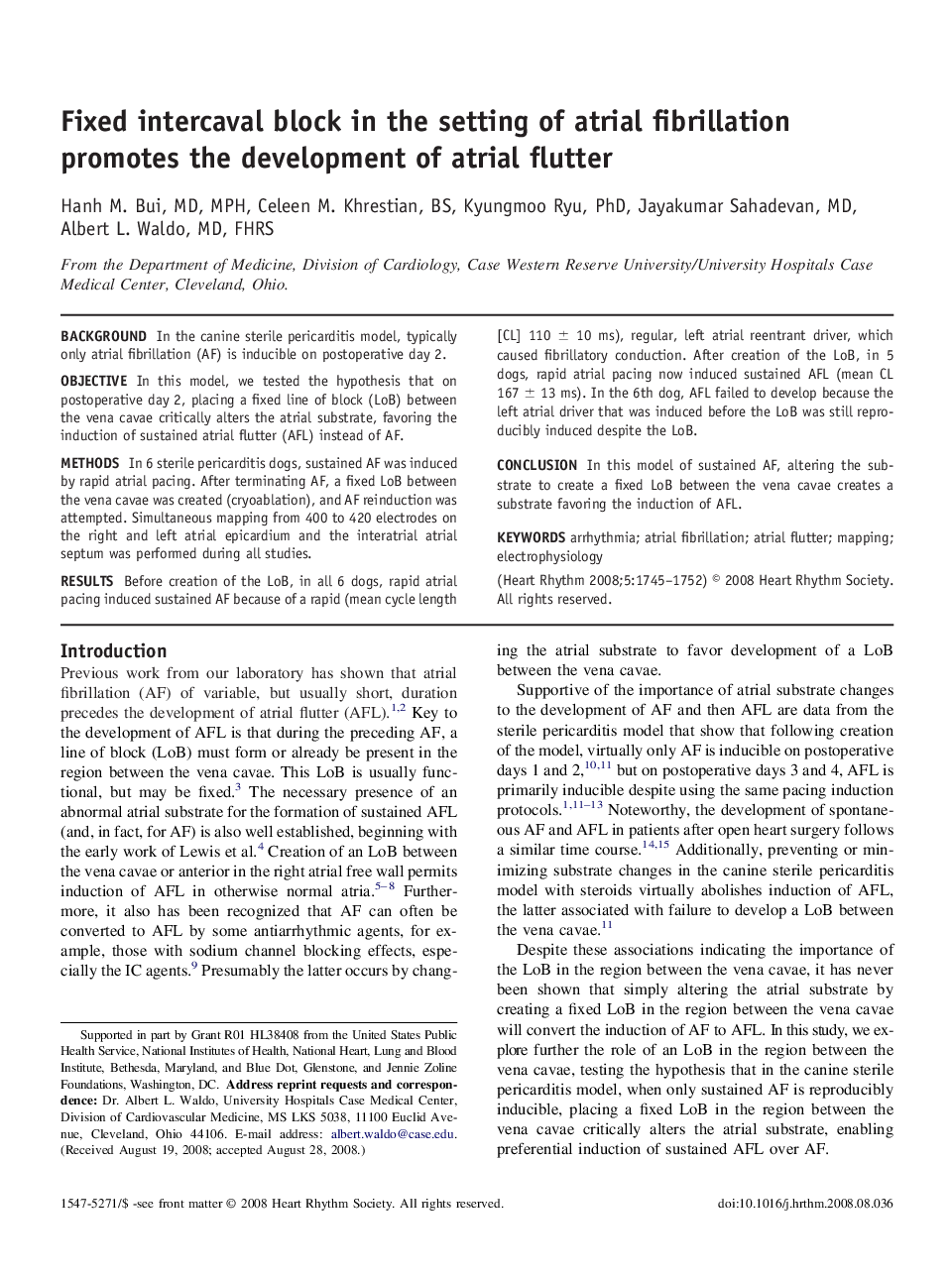| Article ID | Journal | Published Year | Pages | File Type |
|---|---|---|---|---|
| 2925109 | Heart Rhythm | 2008 | 8 Pages |
BackgroundIn the canine sterile pericarditis model, typically only atrial fibrillation (AF) is inducible on postoperative day 2.ObjectiveIn this model, we tested the hypothesis that on postoperative day 2, placing a fixed line of block (LoB) between the vena cavae critically alters the atrial substrate, favoring the induction of sustained atrial flutter (AFL) instead of AF.MethodsIn 6 sterile pericarditis dogs, sustained AF was induced by rapid atrial pacing. After terminating AF, a fixed LoB between the vena cavae was created (cryoablation), and AF reinduction was attempted. Simultaneous mapping from 400 to 420 electrodes on the right and left atrial epicardium and the interatrial atrial septum was performed during all studies.ResultsBefore creation of the LoB, in all 6 dogs, rapid atrial pacing induced sustained AF because of a rapid (mean cycle length [CL] 110 ± 10 ms), regular, left atrial reentrant driver, which caused fibrillatory conduction. After creation of the LoB, in 5 dogs, rapid atrial pacing now induced sustained AFL (mean CL 167 ± 13 ms). In the 6th dog, AFL failed to develop because the left atrial driver that was induced before the LoB was still reproducibly induced despite the LoB.ConclusionIn this model of sustained AF, altering the substrate to create a fixed LoB between the vena cavae creates a substrate favoring the induction of AFL.
